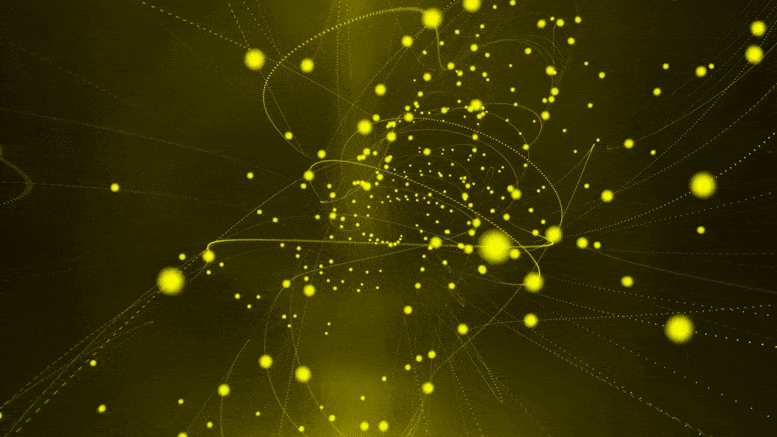
The imaginary component of quantum mechanics can be observed in action in the real world, according to an international research team that includes scientists from the UW Centre for Quantum Optical Technologies (QOT). The findings of the study were published in the journals “Physical Review A” and “Physical Review Letters.”
For nearly a century, physicists have been fascinated by the important question: why are complex numbers, or numbers with a component that has the imaginary number i, so important in quantum mechanics? Normally, it was thought that they were only a statistical trick to make describing phenomena easier and that only results expressed in real numbers had physical significance. However, a team of researchers from Poland, China, and Canada has shown that the imaginary component of quantum mechanics can be observed in action in the real world.
We must greatly rethink our naive beliefs about numbers’ ability to represent the physical world. Only real numbers seemed to be linked to actual physical quantities up until now. However, a study led by Dr. Alexander Streltsov of the University of Warsaw’s Centre for Quantum Optical Technologies (QOT) and involving scientists from the University of Calgary and the University of Science and Technology of China (USTC) in Hefei discovered quantum states of entangled photons that cannot be differentiated without the use of complex numbers. Furthermore, the researchers carried out an experiment that proved the significance of complex numbers in quantum mechanics.
Dr. Streltsov explained that complex numbers were once thought to be strictly statistical in nature in physics. They play an important role in quantum mechanics equations, but only to make physicists’ calculations easier. Currently, we have experimentally and theoretically shown that there are quantum states that can be distinguished when the calculation involves the necessary participation of complex numbers.
Real numbers and imaginary numbers are the two components of complex numbers. They are of the type a + bi, with a and b being real numbers. Certain complex functions are the responsibility of the bivariable. The imaginary number i the square root of -1, plays an important role here.
Nothing in the physical world has a clear relationship with the number i. If you have two or three apples on the table, this is normal. The negative integer -1 can be used to describe the removal of one apple, which can be used to speak about physical flaws. To get a physical equivalent of a logical 1/2 or 1/3, cut an apple into two or three bits. The diagonal of a perfect square table is the (irrational) square root of 2 multiplied by the side length. At the same time, despite my best efforts, I am unable to place an apple on the table.
Complex numbers have a fascinating background in physics since they can be used to explain all sorts of vibrations much more easily than common trigonometric functions. As a result, complex numbers are used in the calculations, and only real numbers are considered in the end.
Quantum mechanics differs from other physics theories because it must describe phenomena that can behave like particles in some situations and waves in others. The Schrodinger equation is considered to be the fundamental equation of this theory. It represents the difference in time of a specific function known as the wave function. This has to do with the probability distribution of discovering a structure in a specific state. The imaginary number I, on the other hand, is freely shown next to the Schrodinger equation’s wave function.
Dr. Streltsov, whose study was sponsored by the Polish Scientific Foundation said he and his partners wanted to find a quantum state that could be differentiated only by complex numbers because there has been a debate for centuries about whether real numbers alone could produce coherent and complete quantum mechanics. “It was an experiment in which we produced these states and physically checked to see if they could be distinguished,” he says.
Experiments on the role of complex numbers in quantum mechanics can be viewed as games between Alice and Bob, with the master directing the game. Gamemasters must merge two photons into one of two quantum states and separate them using complex numbers using a system with a laser and a crystal. After that, one photon is sent to Alice and another to Bob. Each of them takes a photon measurement and then connects with the other photons in order to create a correlation.
The theoretical description was done using a method known as quantum resource theory. The experiment, which uses linear optical techniques to distinguish the intertwined two-photon states locally, was carried out in the Hefei laboratory. The researchers’ prepared quantum states were found to be distinguishable. This shows that complex numbers are an indelible and integral part of quantum mechanics.
The work of the Polish-China-Canada study team is crucial, but it is so extensive that it could contribute to the creation of new quantum technologies. The study of the role of complex numbers in quantum mechanics is particularly important in order to better understand the causes of quantum computers’ performance, which are qualitatively new computing machines capable of solving certain problems at speeds unattainable by classical computers. It’s very helpful.
References:
“Operational Resource Theory of Imaginarity” by Kang-Da Wu, Tulja Varun Kondra, Swapan Rana, Carlo Maria Scandolo, Guo-Yong Xiang, Chuan-Feng Li, Guang-Can Guo and Alexander Streltsov, 1 March 2021, Physical Review Letters.
DOI: 10.1103/PhysRevLett.126.090401
“Resource theory of imaginarity: Quantification and state conversion” by Kang-Da Wu, Tulja Varun Kondra, Swapan Rana, Carlo Maria Scandolo, Guo-Yong Xiang, Chuan-Feng Li, Guang-Can Guo and Alexander Streltsov, 1 March 2021, Physical Review A.
DOI: 10.1103/PhysRevA.103.032401
https://scitechdaily.com/physicists-prove-that-the-imaginary-part-of-quantum-mechanics-really-exists/amp/
https://www.jioforme.com/physicists-prove-that-the-imaginary-part-of-quantum-mechanics-actually-exists/379505/amp/
https://en.uw.edu.pl/uw-researchers-proved-the-existence-of-the-imaginary-part-of-quantum-mechanics/














